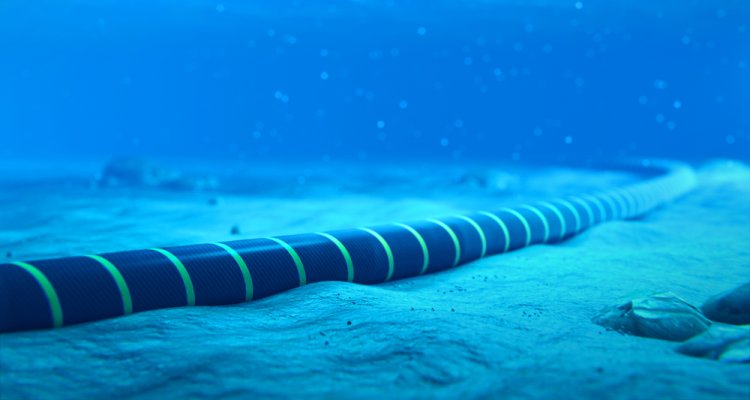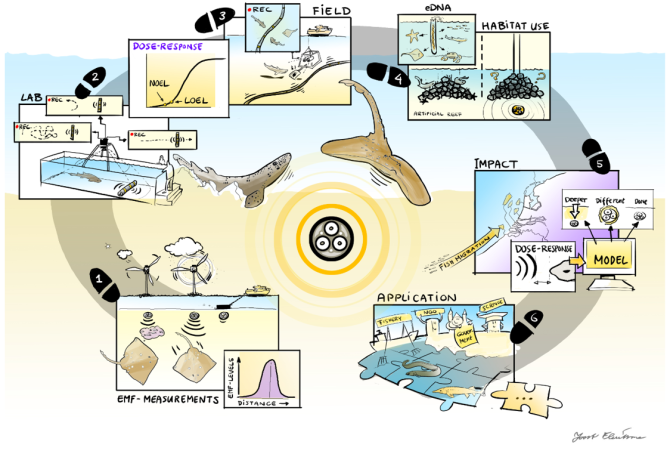
Project
ElasmoPower
By understanding if and how the electromagnetic fields (EMFs) from offshore power cables needed to bring wind energy from sea to shore impact sharks and rays, we can (if needed) optimize the design to ensure the continuation of the energy transition using offshore sources without compromising the North Sea elasmobranch populations.
Aims and objectives
This study aims to reveal the effects of EMF associated with existing and planned offshore wind power cables on elasmobranchs. The following five aspects will be studied:
- EMF field levels - Determine actual EMF levels emitted by cables associated with offshore wind including high-voltage alternate current and high-voltage direct current levels and the influence of different variables as burial depth, substrate, power output and currents.
- Dose-response levels - Determine the avoidance threshold and other behavioral changes in dose-response experiments to EMF levels typical of elasmobranch North Sea species.
- Field validation - Determine effects of EMFs on relative abundance, biomass and behavior of elasmobranchs in the field using Baited Remote Underwater Video Systems (BRUVs) at different EMFT types and levels in an OWF (Ofshore Wind Farms).
- Habitat use - Determine effects of EMFs on selection of artifical habitat, e.g. scour protection, for egg deposition by elasmobranchs applying field ROV video surveys in OWF.
- Impact assessment - Determine the impact ranges of EMFs of existing and future Dutch OWFs on elasmobranchs using developed models and (if required) advise on potential mitigation measures.
- Dissemination - Make the study results available for environmental impact assessment and appropriate decision making by end users.
Method
This research will be conducted through a combination of laboratory and field work studies including BRUVs, ROVs and eDNA. The research will be conducted in six steps as detailed in the figure below.

ElasmoPower Steering Committee
The ElasmoPower project has a Steering Committee (ESC). The members of the ESC are representatives of the consortium partners of the ElasmoPower project, and NGO’s that have endorsed the project with a letter of support during the submission to NOW, specifically the Dutch Elasmobranch Society. The purpose of the ESC is to:
- ensure the research objectives of the ElasmoPower project are met whilst
maintaining the scientific robustness and independence of the results. Meeting
the research objectives is the responsibility of the principle investigator; - confirm the scientific robustness, applicability and appropriate dissemination of the research results for ecological impact assessment, societal, regulatory and industry purposes;
- ensure the appropriate level of scientific novelty; and
- verify that due consideration is given to any adaptations of the research plan/budget, should the need for change arise.
All members of the ElasmoPower Steering Committee have declared that they will state any conflict of interest should they arise and the conflicted member will then not partake in the discussions concerning the relating subject.
The ElasmoPower project partners are Wageningen University, Wageningen Marine Research, Naturalis, T.S.O. TenneT, Witteveen+Bos, WoZep (Wind op Zee ecologisch programma, part of Rijkswaterstaat) and the North Sea Foundation.